First News
Yesterday's mooring deployment at Mooring Station D, aka CB21, was successful albeit tricky with significant swells. The mooring crew was pretty worked by day’s end. You could see noticeable grimaces on some faces as expensive research equipment clanged on the ship's hull as it was being lowered. Once an instrument has been put over the side of the ship there is no going back to see how it is working until next year to see if data was indeed being collected. So... just drop it in and hope for the best in these big swells.
For you birders out there, we had another visit from a rare species, specifically the ivory gull which is an all white seagull with striking black legs. Gary Morgan, the ship's Carpenter managed to get a couple of nice shots of this rarely seen bird.
Since the mooring operations have been completed, there is a sense that we have begun the last leg of the trip which includes several stops along the Mackenzie (river) "MK” Line. The CTD rosette stations are being checked off one at a time and we are close to the bottom of the list. Equipment is being disassembled and returned to its shipping containers, cruise reports are being written, there is talk of "what’s next" upon return, and plans for the end-of-cruise party are being made – BBQ on the heli pad anyone?
A blog comment on the PolarTREC website pointed out that a before and after photo of the shrunken cups was omitted. There were before and after photos but none of them had a size comparison. You'll find that in today's photos along with some underwater shots I used a GoPro on a stick to get.
Beaufort Gyre Observing System: Sediment Traps
We do not recover and /or deploy sediment traps (Figure 10) in this cruise, but previously (2004-2016), the measuring of sediment dynamics in the Beaufort Gyre has been an important element of our observational program. The sedimentation rate in the Beaufort Gyre region is very small relative to other oceans. Interestingly, the geochemistry atlas of the Arctic Ocean shows a spot of red clays located under the climatological center of the Beaufort Gyre circulation cell. One of hypotheses of this spot origin is that it was formed by sediments coming from the surface water layers of the Beaufort Gyre center where very strong downwelling is observed. The sediment trap observations can shed some light on these processes.
Settling particle samples obtained by a time-series sediment trap deployed in the abyssal Canada Basin (at 3067 m) measure carbon export to the deep Arctic Ocean are shown in Figure 11. Strikingly old radiocarbon ages (apparent mean 14C age = 1900 years) of the organic carbon, abundant lithogenic material (80%), and mass flux variations temporally decoupled from the cycle of primary productivity in overlying surface waters together suggest that, unlike other ocean basins, the majority of the particulate organic carbon entering the deep Canada Basin is supplied from the surrounding margins. More information about sediment trap data analysis is available from a paper by Hwang, J., T. I. Eglinton, R. A. Krishfield, S. J. Manganini, and S. Honjo (2008) paper (Lateral organic carbon supply to the deep Canada Basin, Geophys. Res. Lett., 35, L11607, doi:10.1029/2008GL034271.) published in 2008.
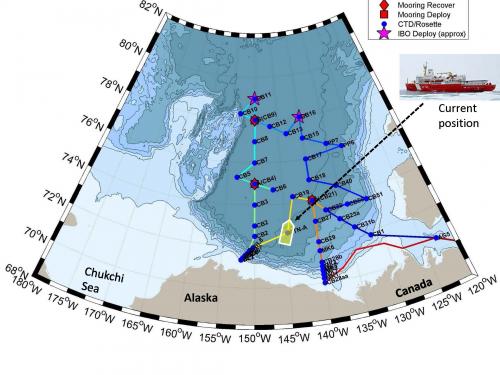 Our location.
Our location.
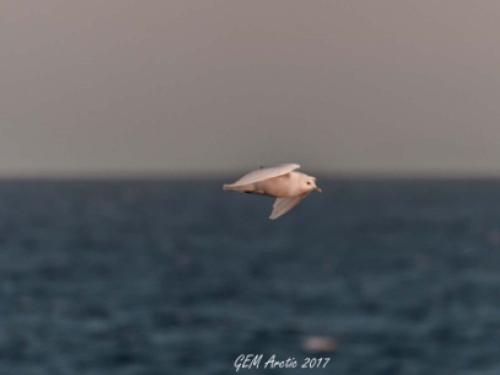 A rare ivory gull off the deck of the Louis S. St. Laurent. Photo by Gary Morgan.
A rare ivory gull off the deck of the Louis S. St. Laurent. Photo by Gary Morgan.
 A rare ivory gull off the deck of the Louis S. St. Laurent. Photo by Gary Morgan.
A rare ivory gull off the deck of the Louis S. St. Laurent. Photo by Gary Morgan.
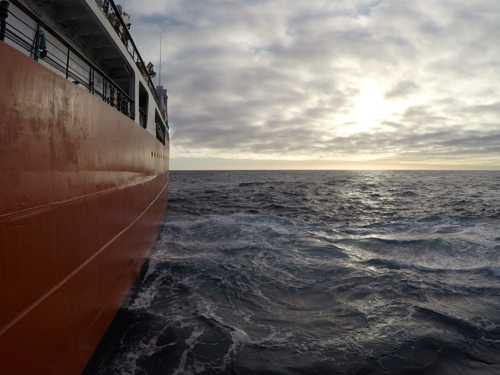 The Louis S. St Laurent drifting in preparation for a CTD rosette cast. Photo by David Jones.
The Louis S. St Laurent drifting in preparation for a CTD rosette cast. Photo by David Jones.
 The shrunken cups surrounding an unshrunken cup for a size comparison. Photo by David Jones.
The shrunken cups surrounding an unshrunken cup for a size comparison. Photo by David Jones.
 Everybody watches Jeff O'Brien (WHOI) work on the last mooring of JOIS 2017. Photo by David Jones.
Everybody watches Jeff O'Brien (WHOI) work on the last mooring of JOIS 2017. Photo by David Jones.
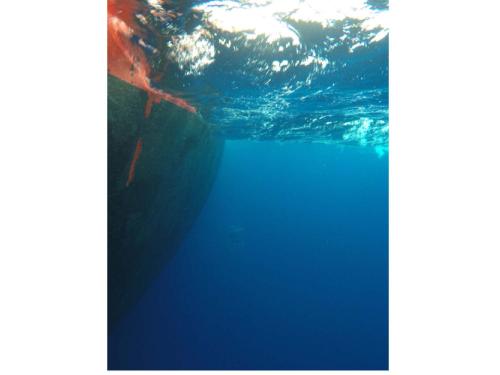 A subsurface look at a CTD rosette cast happening off of the Louis S. St. Laurent. Photo by David Jones.
A subsurface look at a CTD rosette cast happening off of the Louis S. St. Laurent. Photo by David Jones.
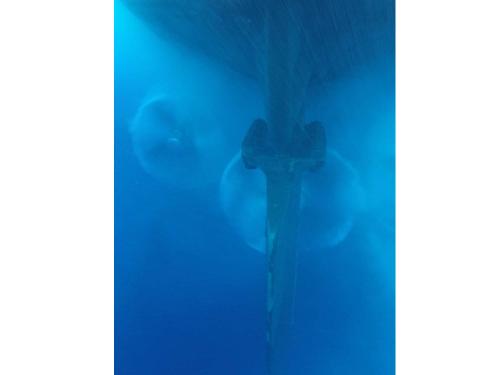 The Louis S. St. Laurent screws in action. Photo by David Jones.
The Louis S. St. Laurent screws in action. Photo by David Jones.
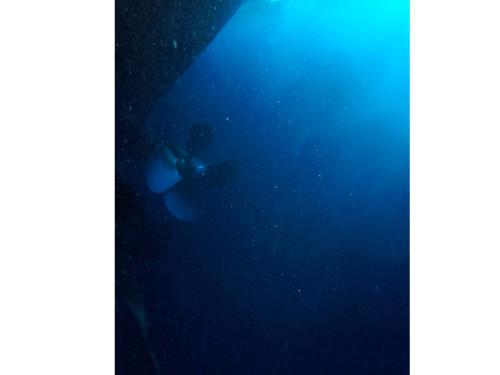 The Louis S. St. Laurent port side screw at rest.
The Louis S. St. Laurent port side screw at rest.
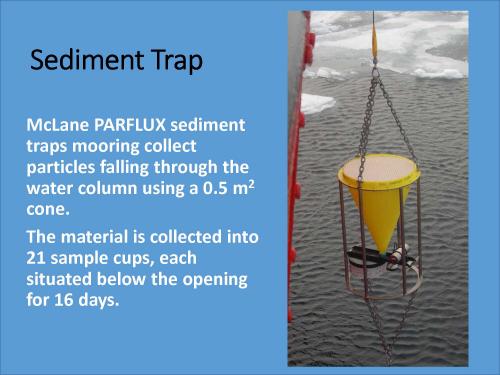 Figure 10: McLane PARFLUX sediment traps mooring collect particles falling through the water column using a 0.5 m2 cone. The material is collected into 21 sample cups, each situated below the opening for 16 days. After recovery, all samples are analyzed at WHOI laboratory. Photo by Rick Krishfield.
Figure 10: McLane PARFLUX sediment traps mooring collect particles falling through the water column using a 0.5 m2 cone. The material is collected into 21 sample cups, each situated below the opening for 16 days. After recovery, all samples are analyzed at WHOI laboratory. Photo by Rick Krishfield.
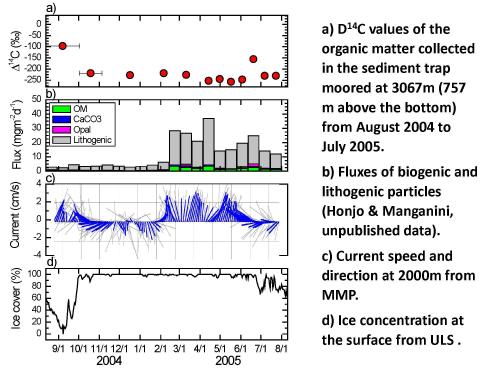 Figure 11: Some interesting results of sediment traps analysis in 2004-2005. This is discussed in text. Courtesy of Steve Manganini.
Figure 11: Some interesting results of sediment traps analysis in 2004-2005. This is discussed in text. Courtesy of Steve Manganini.

Add new comment